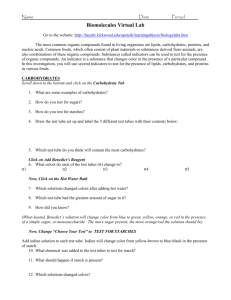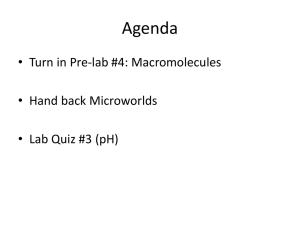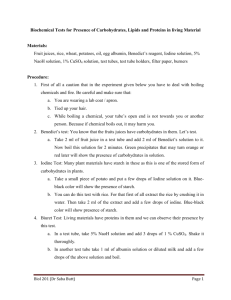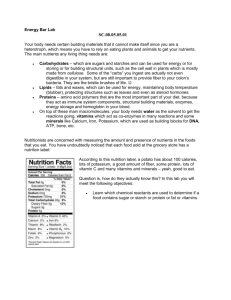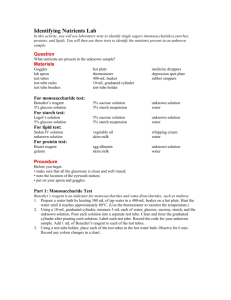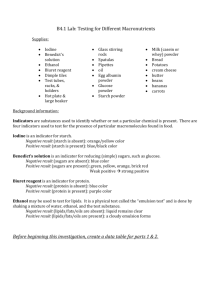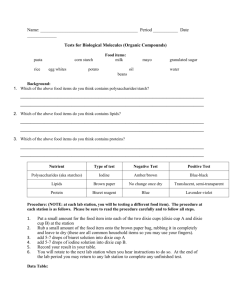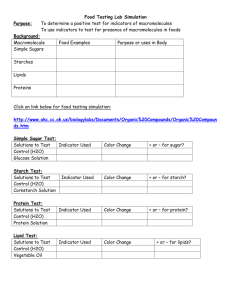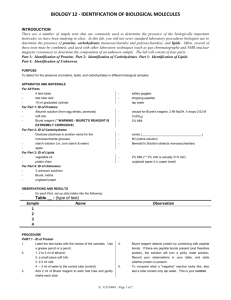Food Macromolecule Testing: Lab Report
advertisement
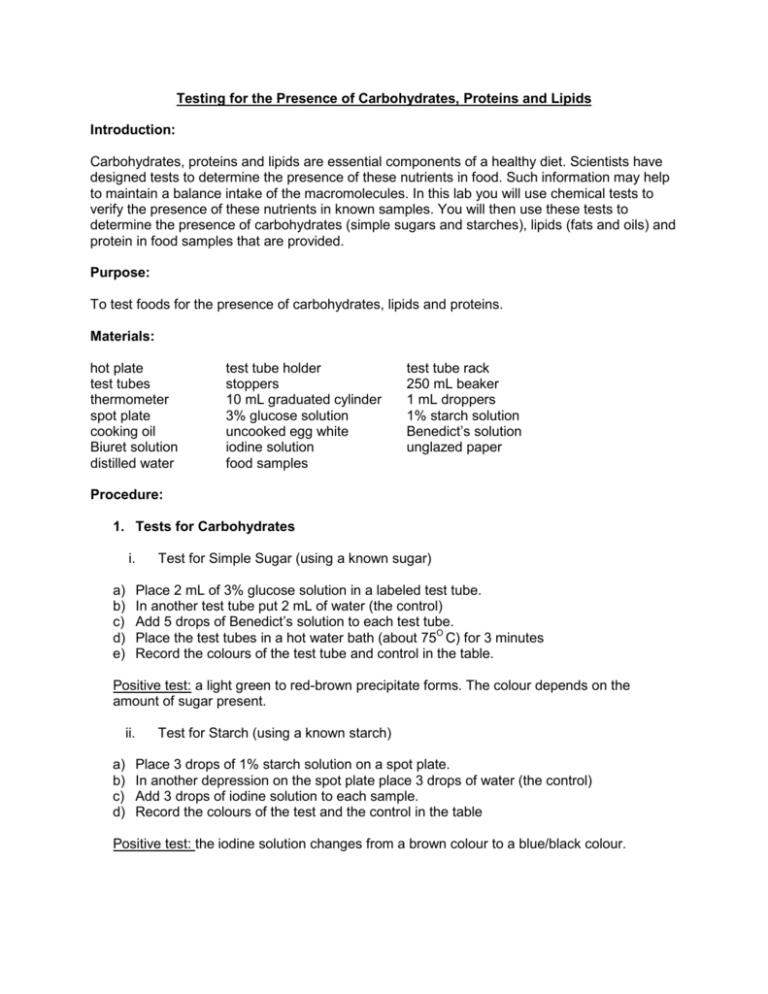
Testing for the Presence of Carbohydrates, Proteins and Lipids Introduction: Carbohydrates, proteins and lipids are essential components of a healthy diet. Scientists have designed tests to determine the presence of these nutrients in food. Such information may help to maintain a balance intake of the macromolecules. In this lab you will use chemical tests to verify the presence of these nutrients in known samples. You will then use these tests to determine the presence of carbohydrates (simple sugars and starches), lipids (fats and oils) and protein in food samples that are provided. Purpose: To test foods for the presence of carbohydrates, lipids and proteins. Materials: hot plate test tubes thermometer spot plate cooking oil Biuret solution distilled water test tube holder stoppers 10 mL graduated cylinder 3% glucose solution uncooked egg white iodine solution food samples test tube rack 250 mL beaker 1 mL droppers 1% starch solution Benedict’s solution unglazed paper Procedure: 1. Tests for Carbohydrates i. a) b) c) d) e) Test for Simple Sugar (using a known sugar) Place 2 mL of 3% glucose solution in a labeled test tube. In another test tube put 2 mL of water (the control) Add 5 drops of Benedict’s solution to each test tube. Place the test tubes in a hot water bath (about 75O C) for 3 minutes Record the colours of the test tube and control in the table. Positive test: a light green to red-brown precipitate forms. The colour depends on the amount of sugar present. ii. a) b) c) d) Test for Starch (using a known starch) Place 3 drops of 1% starch solution on a spot plate. In another depression on the spot plate place 3 drops of water (the control) Add 3 drops of iodine solution to each sample. Record the colours of the test and the control in the table Positive test: the iodine solution changes from a brown colour to a blue/black colour. 2. Test for Lipids (using a known lipid) a) Place a drop of cooking oil on a piece of unglazed paper. Spread it thinly over a small area. b) Repeat a) on another piece of unglazed paper but use water instead (the control) c) Allow drying time (you can speed this up by waving the paper in the air) d) Compare the pieces of paper to see which is translucent (allows light to pass through) e) Record your findings in the table. Positive test: Light passes through the paper with lipids on it. 3. Test for Proteins (using a known protein) a) Place 2 mL of uncooked egg white in a labeled test tube. b) In another test tube put 2 mL of water (the control) c) Add 2 mL of fresh Biuret’s solution to each test tube. Stopper and shake the test tubes gently. d) Record the colours of the test and the control in the table. Positive test: The Biuret solution changes from blue to a pink or purple-violet colour. 4. Test of the Unknown(s) (using one or more unknown sample(s)) a) Test the sample(s) for sugar, starch, protein and lipids. Solid food should be broken up with a small quantity of water first. b) Record your results in the table. Include a + or – in the appropriate space for the unknown sample(s) Observations: Table 1: Results for Known Macronutrient Testing Nutrient Simple sugar Starch Lipid Protein Test Name Test Results Control Results Table 2: Results for Unknown Macronutrient Testing Food Tested Sugar (+/-) Starch (+/-) Lipid (+/-) Discussion: 1. What are some possible sources of error for this experiment? Protein (+/-)


